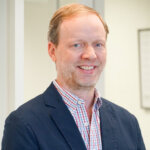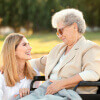Great news in senior home health! Individuals with peripheral artery disease (PAD) are better able to receive treadmill therapy. PAD is a debilitating condition that may result from cigarette smoking or diabetes and can increase a person’s chance of developing a heart attack or stroke, and in some cases lead to limb amputation. Medicare is now going to pay for the cost of treadmill therapy when recommended and supervised by a medical professional.
With limited treatment methods, persons suffering with PAD encounter aches and cramping in the legs described as “feeling as if their leg is in a vise,” according to University of Minnesota’s Diane Treat-Jacobson. Prescription medications have proven unsuccessful in decreasing pain, and although stent or bypass procedures can certainly help, they’re expensive and come with particular associated risks. The most recent research is demonstrating that treadmill therapy can be equally effective, at a notably reduced cost, and with Medicare on board to cover that cost, a large number of rehab centers are preparing for a wave of patients ready to try it out.
The expectation is that some other insurance providers will soon follow suit and provide coverage for treadmill therapy, which is often the case when Medicare covers a treatment option. At this time, over 2,000 hospital-based therapy centers are preparing to offer treadmill workouts to people whose medical doctors prescribe and oversee them.
Given that individuals with PAD often reduce physical exercise due to leg pain, the many benefits of monitored treadmill therapy go beyond reduced hospitalizations and cost savings to enhancing cardiovascular and lung health, lengthening the distance a patient with PAD can walk without soreness, and also possibly extending length and quality of life.
If your senior loved one is one of the 8 million Americans struggling with the challenges of PAD, or any other medical condition that makes living at home independently challenging, contact Home Matters. We’re able to provide assistance in many ways, including:
- Offering transportation and accompaniment to treatment along with other medical-related appointments.
- Helping with activities in the home, like light housekeeping and laundry.
- Preparing nourishing and appealing meals.
- Running errands like purchasing food and prescription medications.
- Providing support for seniors to participate in doctor-approved exercise programs.
- Offering friendly companionship – somebody with whom to take walks, enjoy favorite hobbies and pastimes, and to become more actively engaged in the world around them.
- And much more.














